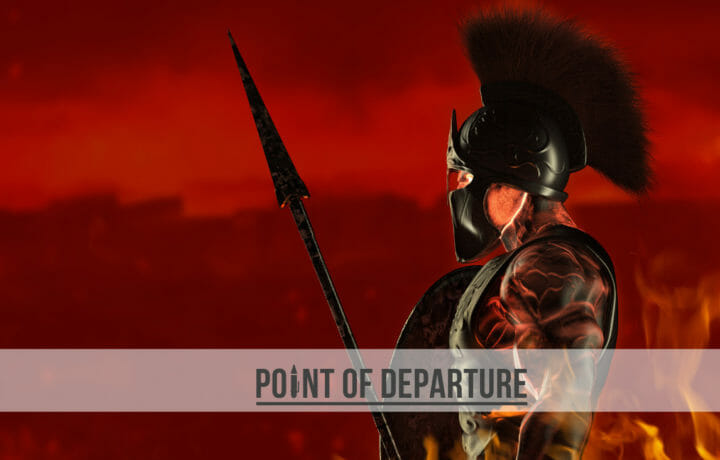As awards ceremonies go, it was a lot like every other one you sit through. A lot of laudatory comments about everything the individual had done, the impact of those contributions, and how appreciated the command was. Then the chief of staff finished with a flair: “He is a warrior in the truest sense of the term.”
Wait, what?
It wasn’t that the individual didn’t deserve recognition, or that we weren’t all appreciative of what he’d accomplished. But we’re talking about a staff officer, not Crazy Horse. This person’s job was to collect and process data, to prepare reports, and to brief the outcomes of their analysis. There weren’t many other people on staff who were as effective or as efficient. But it wasn’t as if they were galloping around the installation counting coup on subordinate staffs (although that might have been warranted on a few occasions). They were phenomenal at their job. But they weren’t a warrior by any stretch of the imagination.
The Warrior Few
I grew up in a quiet corner of the United States, in a mill town that straddled Nez Perce country. In the summers, we traveled through Blackfeet lands and usually ended up in the heart of Sioux territory. Every so often, we’d spend those months in traditional Shoshone or Cheyenne areas. We rarely stayed at a Holiday Inn, but I had a pretty clear idea of what a warrior was and what one represented.
In the truest sense of the term, we define a warrior broadly as someone who specializes in warfare as a profession, especially in the context of a tribal or clan-based culture that acknowledges a warrior as something unique, such as a warrior caste or class. History is replete with examples of such individuals: Alexander the Great, Genghis Khan, Leonidas of Sparta, and Atilla the Hun. In the same vein, warrior castes provide examples of groups whose exploits can be traced through the ages: Mongols, Visigoths, Spartans, and Samurai, to name just a few.
From a more recent perspective, names such as Geronimo, Dan Daly, and Audie Murphy come to mind. The Apache were synonymous with the warrior class, as are more contemporary warfighting cultures such as the Gurkhas, the U.S. Navy SEALS, and the British Special Air Services. The mental model that emerges is consistent across time: warfare is institutionalized. These are groups and individuals steeped in the art of combat.
Killing it with PowerPoint and bringing the pain with spreadsheets filled with data are both admirable skills in a staff officer, but not exactly the same warrior culture that produced Hannibal or Chief Joseph. Somehow, I just can’t see Saladin obsessing over quad charts or Spartacus losing sleep over green-amber-red ratings.
What’s In a Name
That’s not to say that there is anything wrong with our military forces identifying with a warrior culture. The U.S. Army’s warrior ethos is a positive example of determination, resilience, and loyalty. The tradition of calling National Guard troops weekend warriors was innocent enough because the phrase was decidedly tongue-in-cheek. And when people referred to former Defense Secretary and Marine General James Mattis as the warrior monk, it was a respectful acknowledgement of his hard-earned reputation as a warfighter and scholar. In some ways, the military is a separate caste of society, but that’s fraught with issues too complex to unpack here.
Identifying with the ideals framed in the warrior ethos is one thing; obsessing over the term is another. And it’s not just that we sling it around with impunity, we’ve surrounded ourselves with the symbology of a warrior society. You can find more gear adorned with Punisher skulls in the military and law enforcement (which is especially problematic) than at Comic-Con. Spartan helmets can be found in organizational logos ranging from personnel companies to logistics battalions. While I’m comforted that the soldier refueling my vehicle has a personal connection to Thermopylae, I doubt they could find it on a map.
Can we stop the insanity already? While there are qualities of a warrior society to admire and possibly even emulate, that’s simply not who we are. Are there elements within our ranks that qualify as warriors? Certainly. But the person printing ID cards at the in-processing center? Not a warrior. The spoon slinging eggs at the dining facility – and let’s just acknowledge the fact that we’re too cultured to call it a mess hall as proof – probably wouldn’t do well fighting off the Huns. The dude with his ribbon rack spread across the rear window of his F-150 wants you to think he is a warrior, but he’s got more negligent discharges than actual time in combat.
Not everyone is a warrior, and that’s okay.




